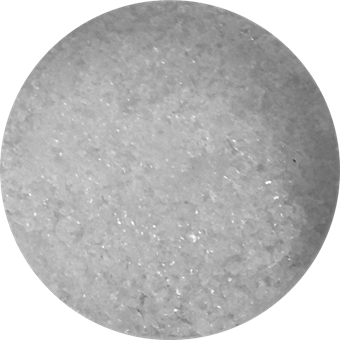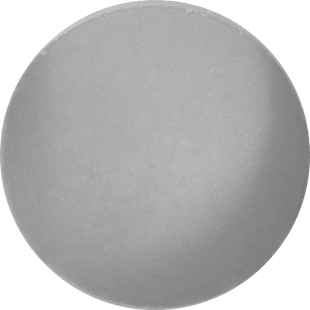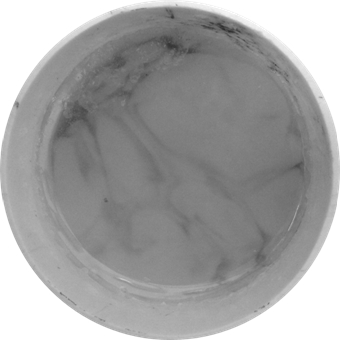Conditioner for producing glass-ceramics and method for producing glass-ceramics
A technology of glass-ceramics and regulators, which is applied in glass manufacturing equipment, glass molding, manufacturing tools, etc., can solve the problems affecting the physical and chemical properties of glass-ceramics, weakening of sintering driving force, and weakening of fusion between particles, etc., to achieve Physical and chemical properties, eliminate interfacial stress, and promote the effect of the overall crystallization process
- Summary
- Abstract
- Description
- Claims
- Application Information
AI Technical Summary
Problems solved by technology
Method used
Image
Examples
Embodiment 1
[0058] The temperature of the glass melting furnace is 1450°C. The molten glass flows into the water quenching pool through the outlet of the melting furnace, and the water quenching glass pellets are taken out and transported to the storage yard. The material is sent to the molding workshop. The cloth state of the glass pellets is as follows figure 1 shown.
[0059] Use the high-temperature boron plate as the bottom of the forming mold, and the boron slats as the frame to form a cuboid mold. The width of the boron plate ribs used is 25mm. A layer of ceramic fiber paper is laid on the bottom and surrounding of the boron plate mold to make the mold flat and without inclination.
[0060] Weigh 100kg of glass pellets, 0.5kg of CaF 2 Powder, 0.8kg of TiO 2 powder, 0.48kg of ZnO powder and 0.22kg of BaO powder, first spread the glass pellets in the mold, control the thickness of the material layer to be 18-20mm, and then put the CaF 2 Powder, TiO 2 The powder, ZnO powder and B...
Embodiment 2
[0064] The temperature of the glass melting furnace is 1450°C. The molten glass flows into the water quenching pool through the outlet of the melting furnace, and the water quenching glass pellets are taken out and transported to the storage yard. The material is sent to the molding workshop.
[0065] Use the high-temperature boron plate as the bottom of the forming mold, and the boron slats as the frame to form a cuboid mold. The width of the boron plate ribs used is 25mm. A layer of ceramic fiber paper is laid on the bottom and surrounding of the boron plate mold to make the mold flat and without inclination.
[0066] Weigh 100kg of glass pellets, 0.5kg of CaF 2 Powder, 0.7kg of TiO 2 powder, 0.46kg of ZnO powder, 0.24kg of BaO powder, 0.06kg of Cr 2 o 3 powder and 0.04kg of Fe 2 o 3 Powder, first spread the glass pellets in the mold, control the thickness of the material layer to 18-20mm, and then put CaF 2 Powder, TiO 2 powder, ZnO powder, BaO powder, Cr 2 o 3 Pow...
Embodiment 3
[0068] The temperature of the glass melting furnace is 1450°C. The molten glass flows into the water quenching tank through the outlet of the melting furnace, and the water quenching glass pellets are taken out and transported to the storage yard. The material is sent to the molding workshop.
[0069] Use the high-temperature boron plate as the bottom of the forming mold, and the boron slats as the frame to form a cuboid mold. The width of the boron plate ribs used is 25mm. A layer of ceramic fiber paper is laid on the bottom and surrounding of the boron plate mold to make the mold flat and without inclination.
[0070] Weigh 100kg of glass pellets, 1.05kg of CaF 2 Powder, 0.66kg of TiO 2 powder, 0.54kg of ZnO powder, 0.30kg of BaO powder, 0.15kg of P 2 o 5 powder and 0.3kg of ZrO 2 Powder, first spread the glass pellets in the mold, control the thickness of the material layer to 18-20mm, and then put CaF 2 Powder, TiO 2 powder, ZnO powder, BaO powder, P 2 o 5 Powder a...
PUM
| Property | Measurement | Unit |
|---|---|---|
| particle diameter | aaaaa | aaaaa |
| thickness | aaaaa | aaaaa |
| thickness | aaaaa | aaaaa |
Abstract
Description
Claims
Application Information
 Login to View More
Login to View More - R&D
- Intellectual Property
- Life Sciences
- Materials
- Tech Scout
- Unparalleled Data Quality
- Higher Quality Content
- 60% Fewer Hallucinations
Browse by: Latest US Patents, China's latest patents, Technical Efficacy Thesaurus, Application Domain, Technology Topic, Popular Technical Reports.
© 2025 PatSnap. All rights reserved.Legal|Privacy policy|Modern Slavery Act Transparency Statement|Sitemap|About US| Contact US: help@patsnap.com



